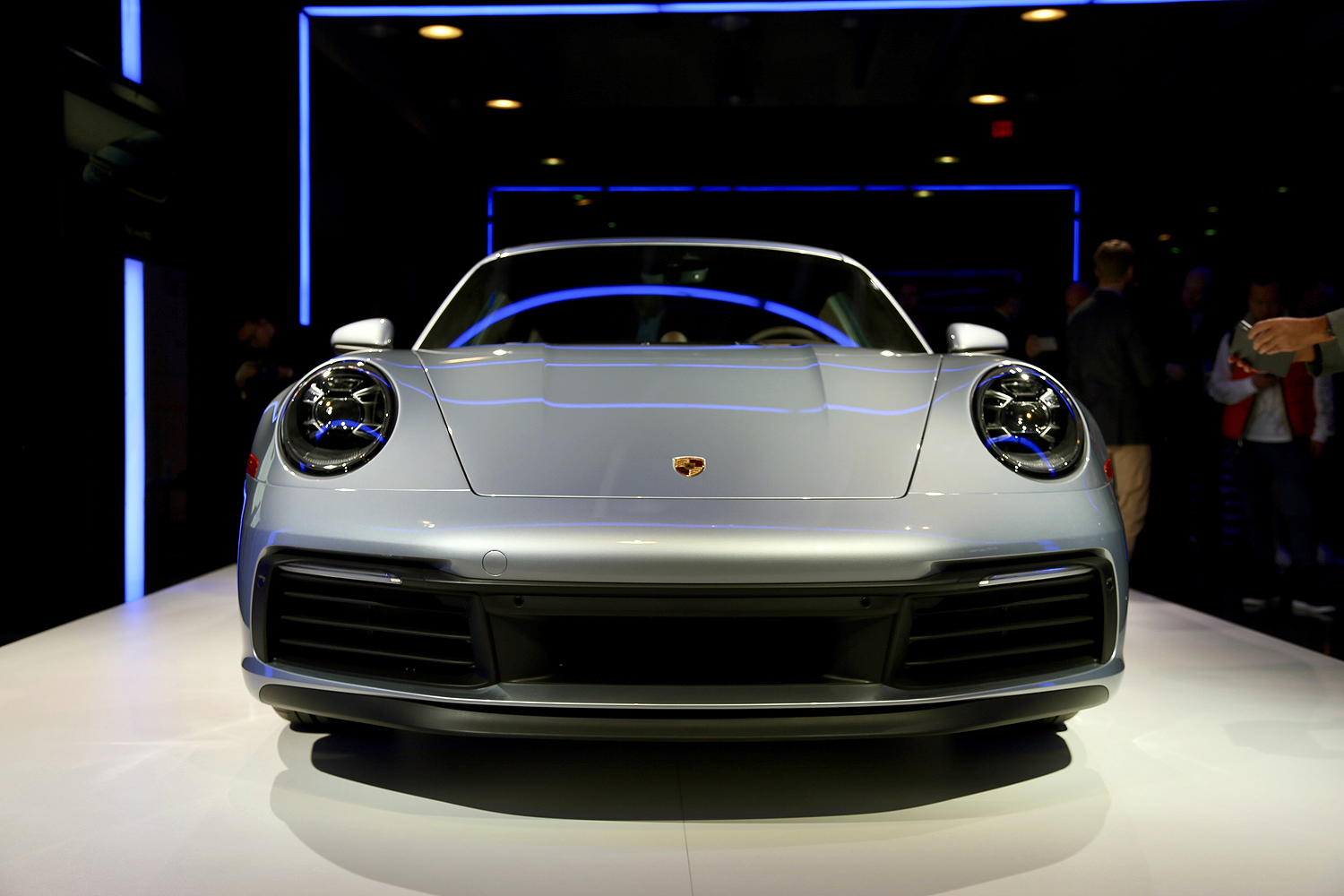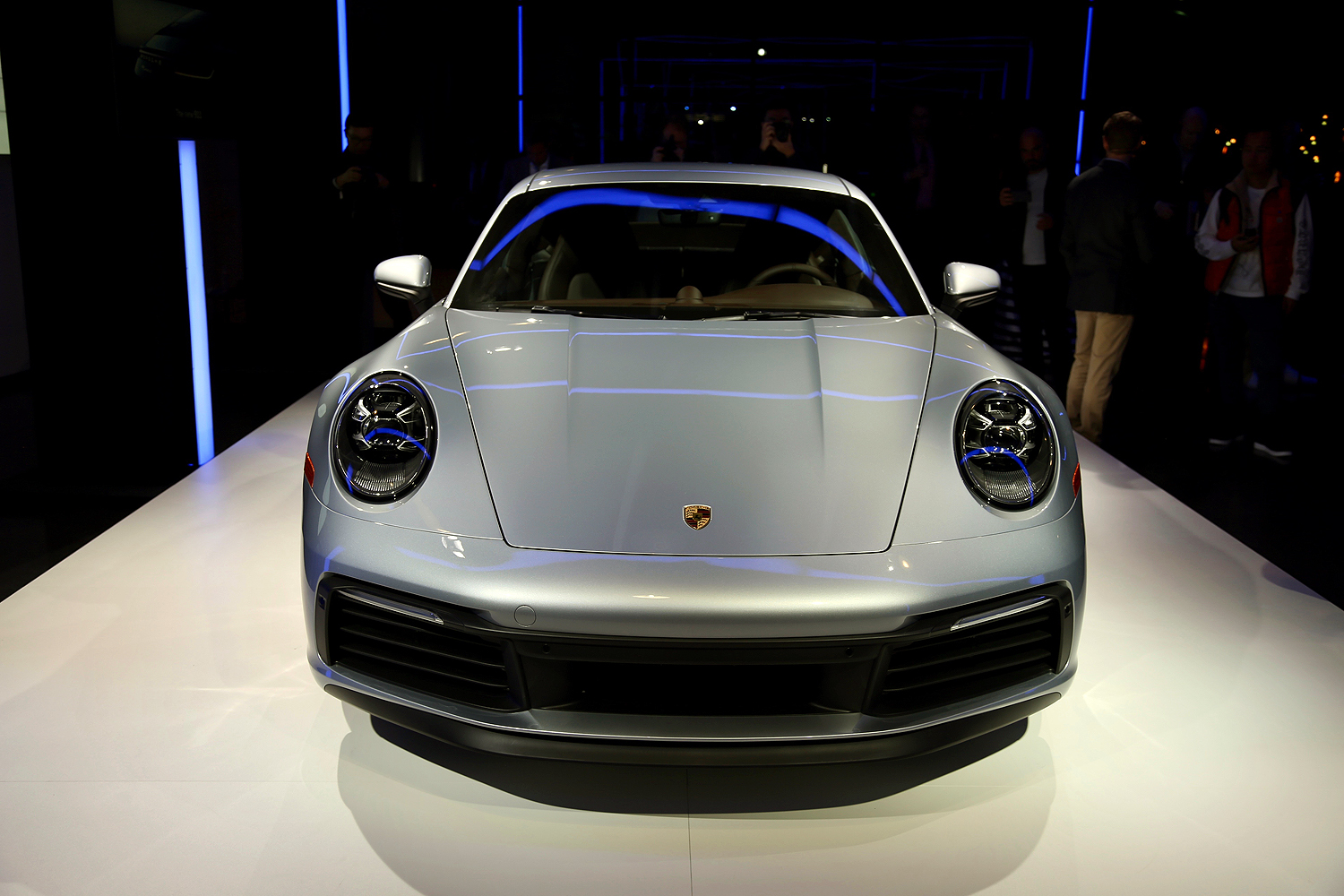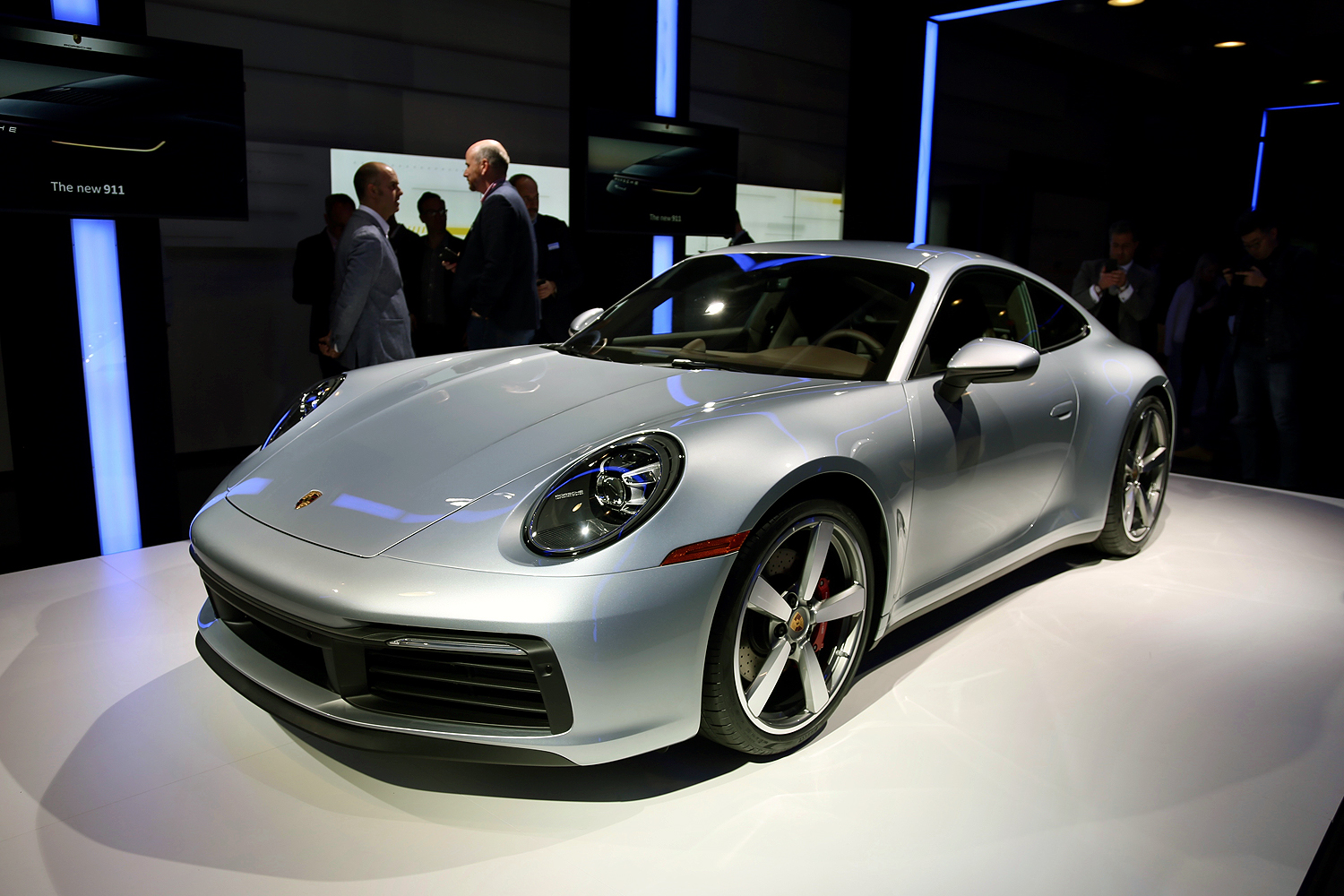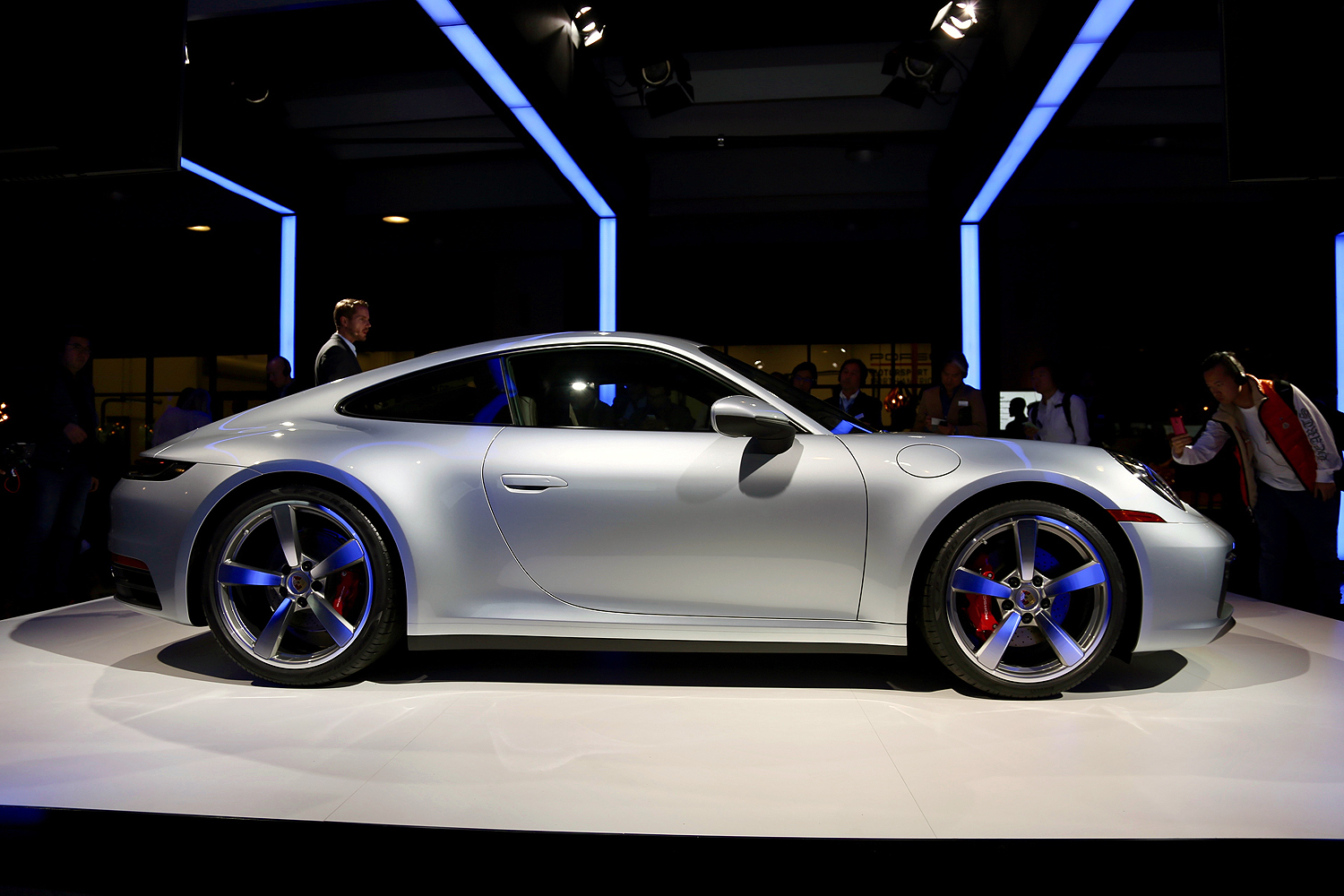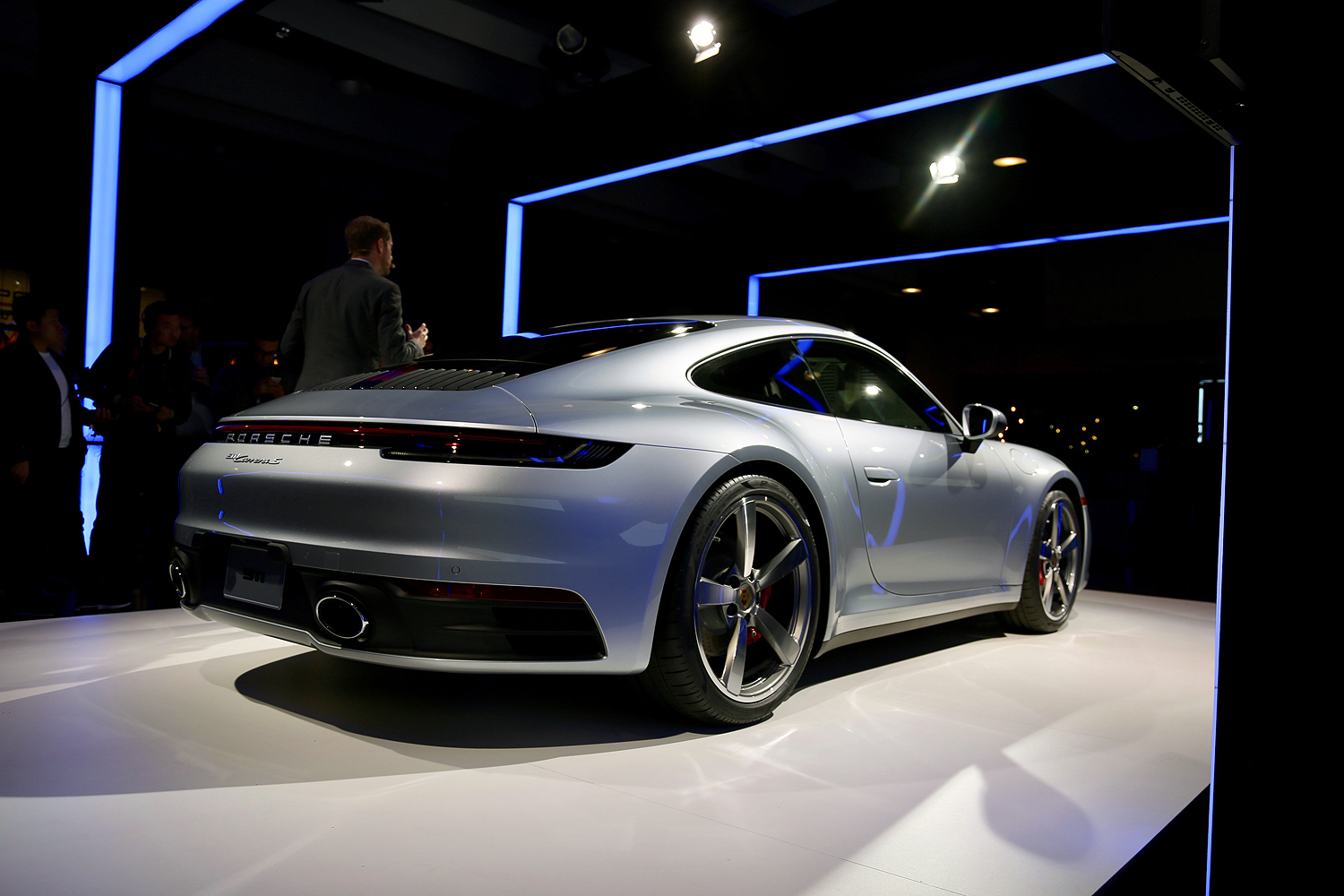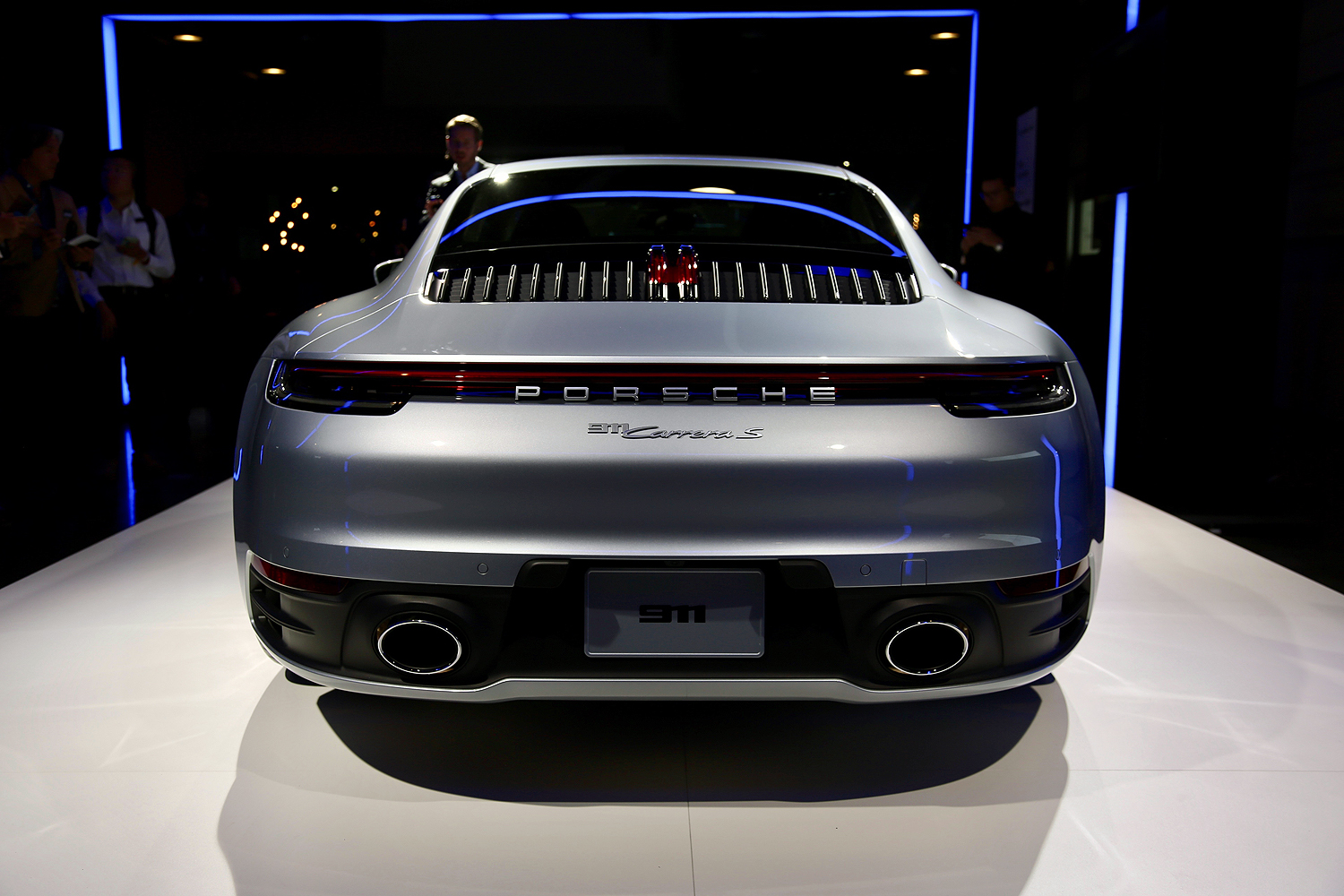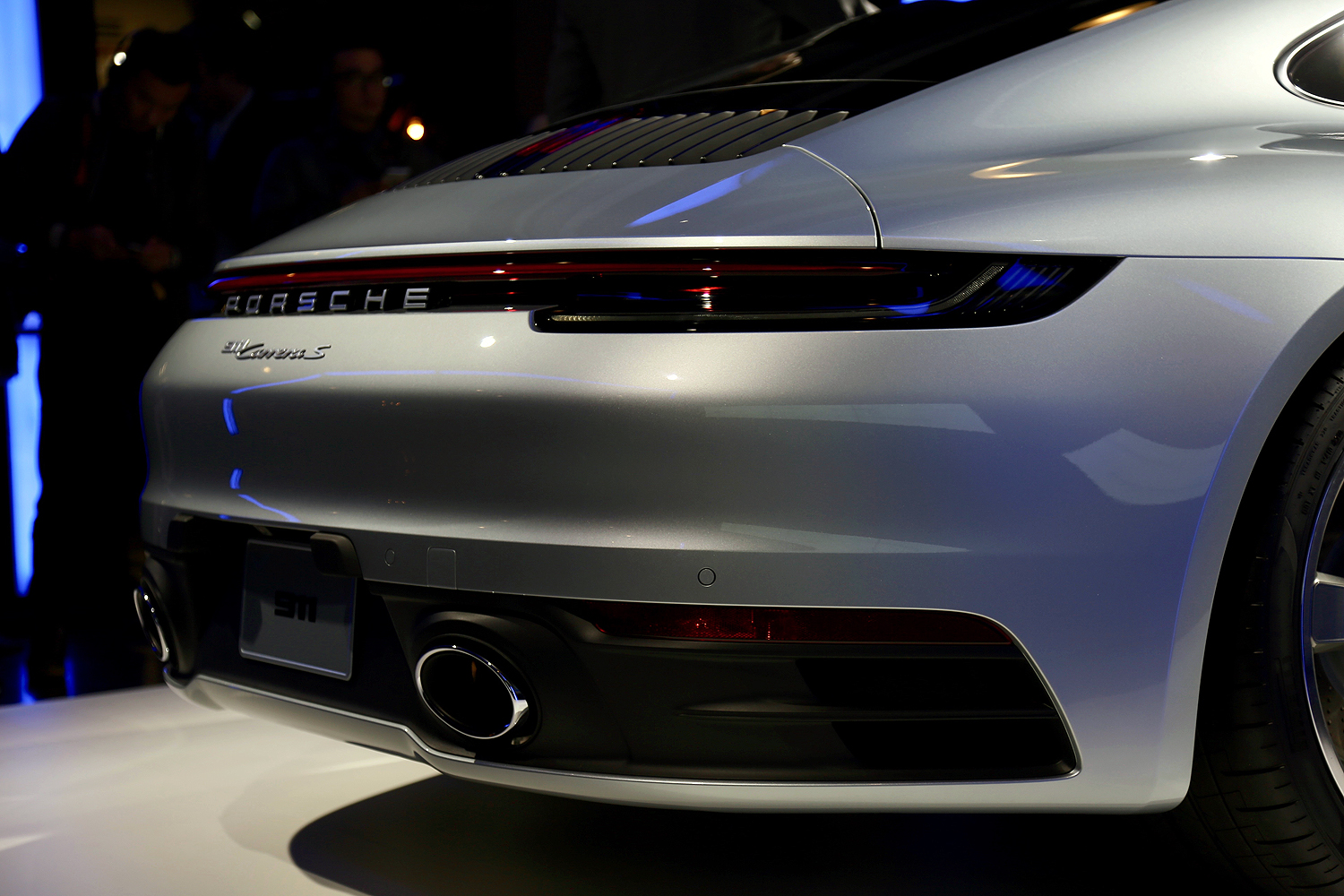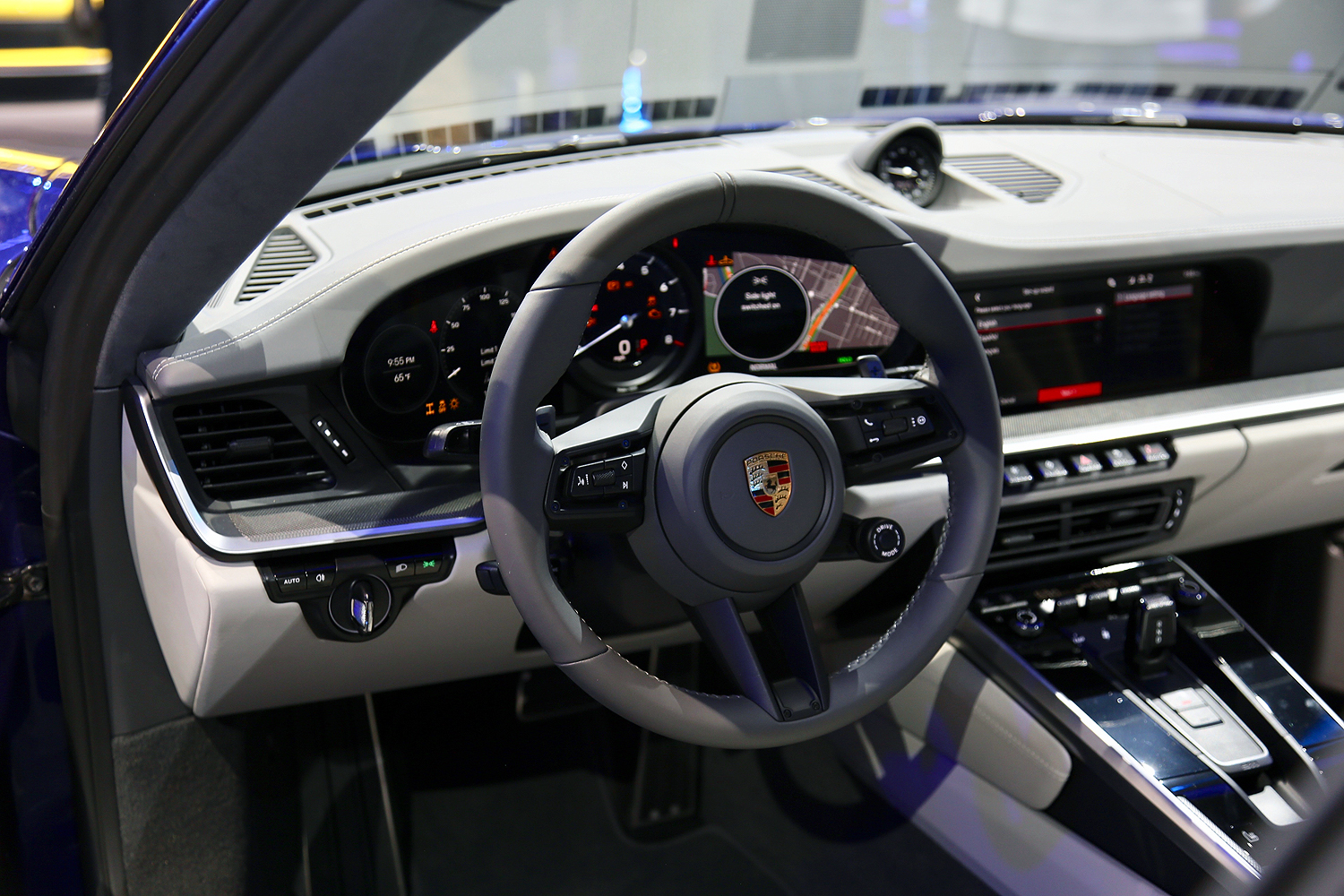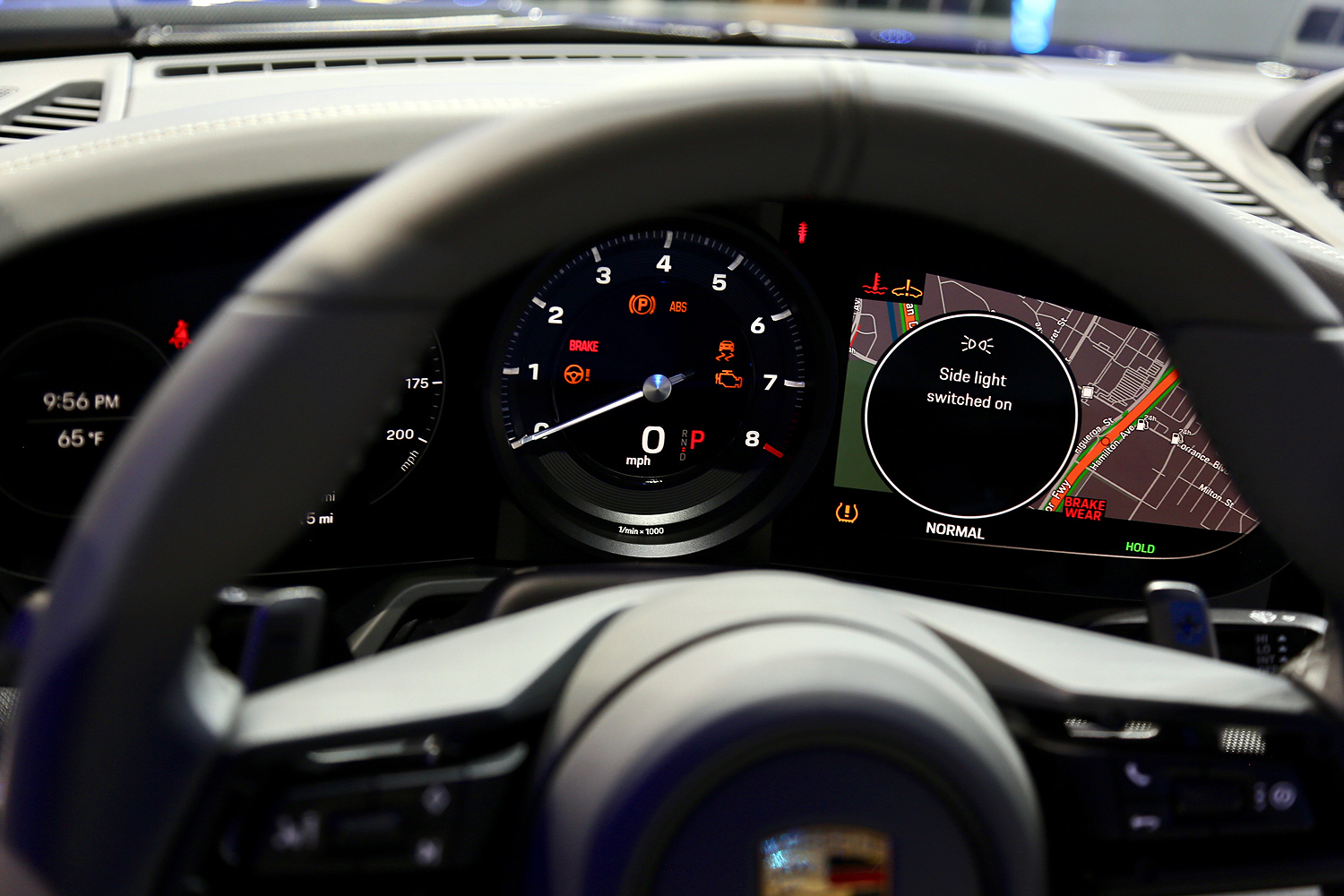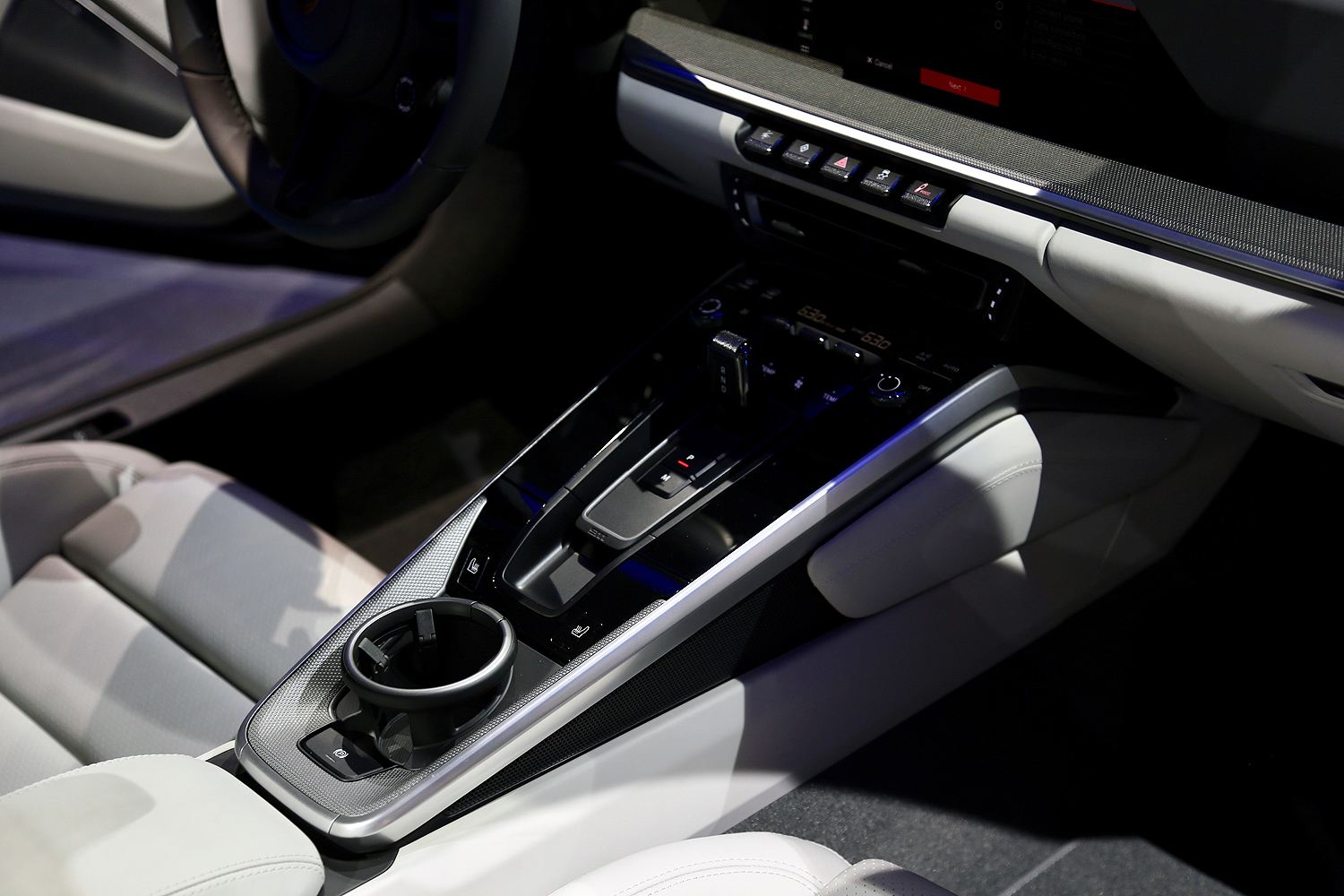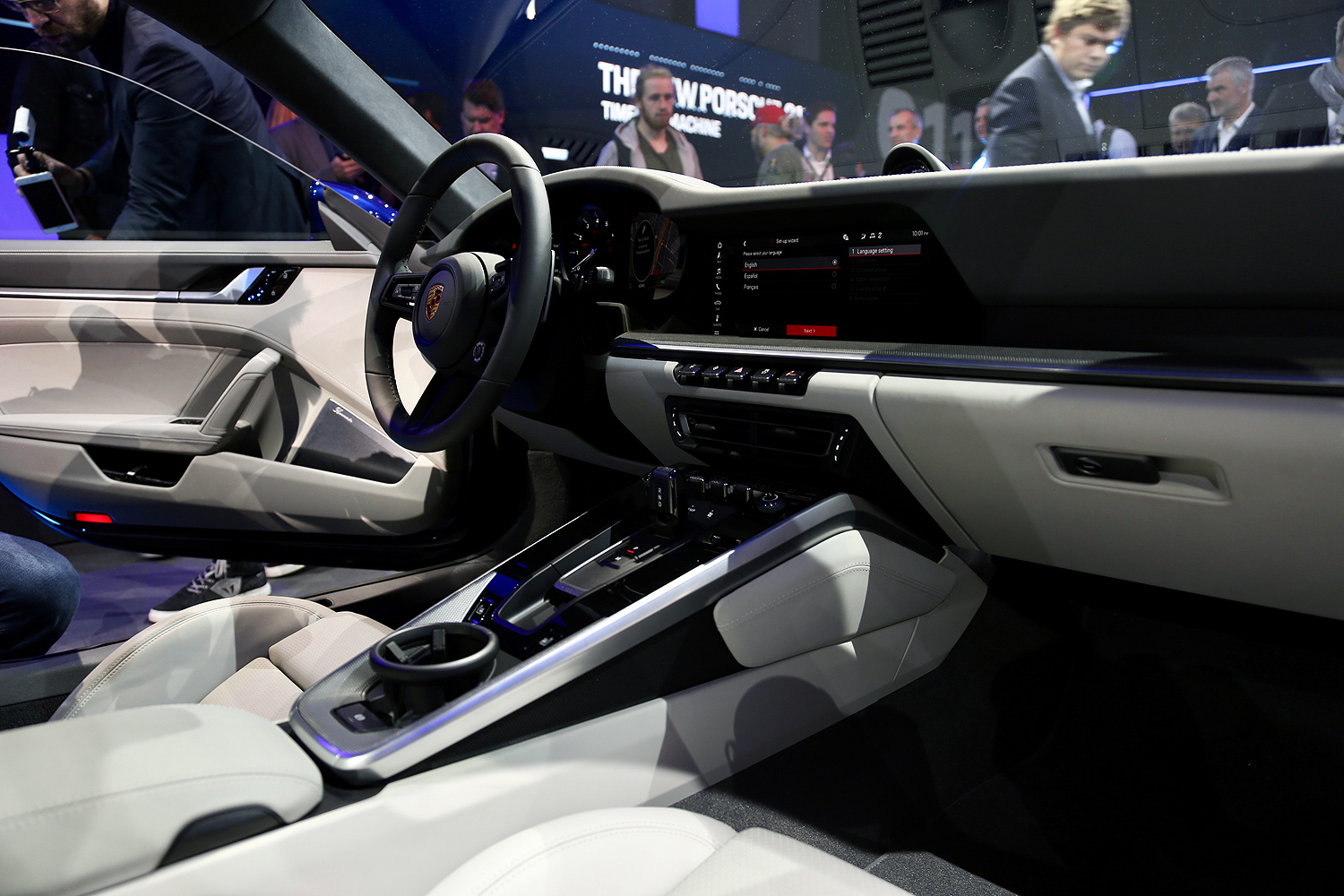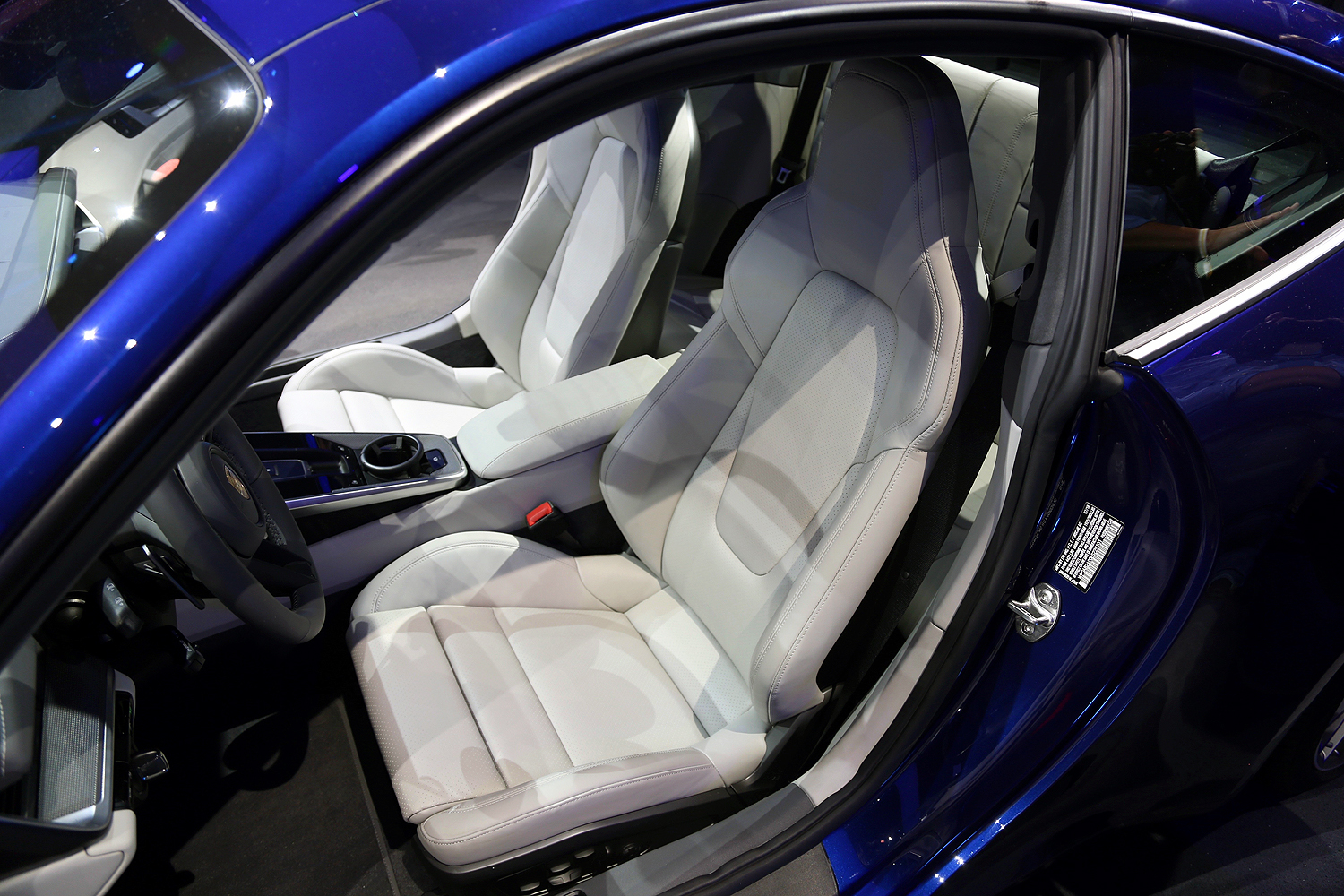Porsche introduced the eighth-generation 911 Carrera ahead of its public debut at the 2018 Los Angeles Auto Show. In a presentation that stressed the timelessness of the emblematic sports car, the German firm strolled out every generation of the 911 before unveiling the new model (called 992 internally) amidst a cloud of smoke. Along with our first full look at the 2020 911, we got the model’s final technical specifications and full information about what makes this the most digital sports car Porsche has ever created.
The new 911 will enter production first as S and 4S variants, followed by entry-level and higher-performance trims. Power predictably comes from a twin-turbocharged, 3.0-liter flat-six engine that makes 443 horsepower and 390 pound-feet of torque, figures that represent increases of 23 and 22, respectively, over the outgoing model. At launch, the S-badged models will only be equipped with an eight-speed, dual-clutch automatic transmission, but a seven-speed manual unit will be offered with base (and perhaps other) versions later in the production run.
The 911 Carrera S performs the benchmark zero-to-60-mph sprint in 3.5 seconds, meaning it’s nearly half a second quicker than its predecessor. Selecting all-wheel drive drops that time by a tenth of a second. It keeps accelerating until it reaches 190 mph.
Porsche’s designers have subtly sharpened the 911’s rounded physique, giving the 992 model some throwback styling cues like a creased hood that’s a tribute to the original model. The headlights are still oval — no surprises there. Porsche tried to move away from that archetypal styling cue with the 996-generation 911 and fans revolted. It still looks like a 911, too, but the rear lights are now connected by a light bar and the vents on the decklid gets a new-look design that integrates the third brake light. The changes are evolutionary at best, and we wouldn’t have it any other way.
Buyers can select new 19- or 20-inch front and 20- or 21-inch rear wheels. Though the new 911 doesn’t grow in length, it’s wider than its predecessor for improved stability and turn-in response. And, this is the first time that rear- and all-wheel drive variants have the same rear track.
The 2020 911 is the most digital sports car Porsche has ever made.
Inside, the 911 is more digital than ever before. It borrows features from the Cayenne and the Panamera, including an instrument cluster made up of two large, driver-configurable screens positioned on either side of an analog tachometer. Porsche includes a standard, 10.9-inch touchscreen for the infotainment system and online navigation with real-time traffic information. And, interestingly, smartphone connectivity has become a surprisingly important part of the 911 experience.
Porsche developed three apps for owners. The first is called Porsche Road Trip. As its name implies, it helps driving enthusiasts plan road trips by selecting a scenic route, giving restaurant and hotel recommendations, and highlighting viewpoints along the way. Porsche 360+ is a lifestyle assistant which “offers services that make everyday life easier for customers, and opens up access to exclusive experiences,” the firm explains. And, Porsche Impact measures the amount of CO2 the 911 emits on a given trip and lets owners offset it by making a financial donation to climate-related projects around the world.
On the tech side, the 2020 911 introduces a wet weather detector that uses sensors in the wheel well to monitor water buildup coming off the front tires. When the system hits a certain mark, it adjusts the stability control system and alerts the driver to switch into wet driving mode. Provided he or she complies, the spoiler moves into its highest position, the differential is recalibrated, and the front axle gets more torque (this applies to all-wheel drive models only). Other available driving aids include night vision (a first for the 911) and adaptive cruise control with a stop-and-go function.
With these improvements, Porsche demands extra coin. The S model retails for $114,250 once buyers factor in a $1,050 destination charge, and the 4S moves to $121,650. These figures represent increases of $5,900 and $7,500, respectively. Both models are on-sale now, and deliveries will begin during the summer of 2019. The German firm isn’t done with the current-generation 991 model, though.
It produced the most powerful naturally aspirated engine ever fitted to a street-legal 911 and stuffed it between the rear fenders of the updated GT3 RS. And, it’s sending off the current 911 by building a super-sexy Speedster model.
What’s next?
Porsche will gradually expand the new 911 lineup with a base variant, convertible and Targa models, high-performance Turbo versions, and race-derived GT3 models. We expect the family will start to grow at the 2019 Geneva Auto Show.
The big question mark hovering above the next 911 is whether it will incorporate electrification. August Acheitner, the head of the 911 model line, hinted it’s a strong possibility. He didn’t explicitly confirm it, but he highlighted the model’s tendency to evolve mechanically over the past couple of decades. First, it adopted water-cooled engines. Then, more recently, the Carrera models downsized and went turbo-only. Electrification seems like the next logical step forward, very likely in the form of a plug-in hybrid drivetrain capable of running on battery power for short distances.
Porsche laid the rumors of an all-electric 911 to rest — at least for the time being. While the next-generation model won’t offer a pure electric option, the 911 could lose its flat-six sooner or later. “Two years ago I’d have said no way. Today, I wouldn’t categorically rule it out,” Acheitner remarked.
Updated 11-28-2018: Added full information about the 2020 Porsche 911.
Editors' Recommendations
- New Hyundai Ioniq electric vehicle gets big boosts in range and horsepower
- Would you guess that the 600-horsepower 2020 Audi RS Q8 is a hybrid?
